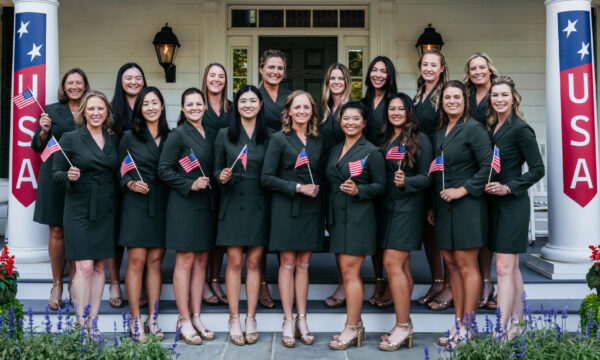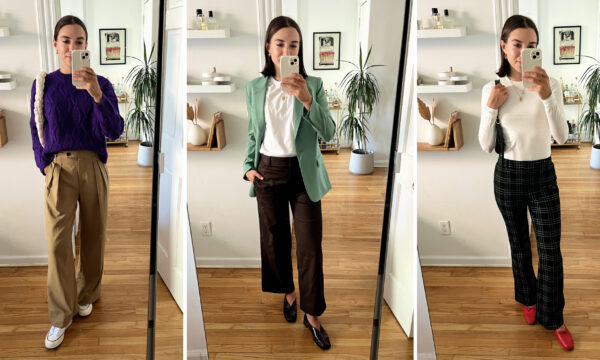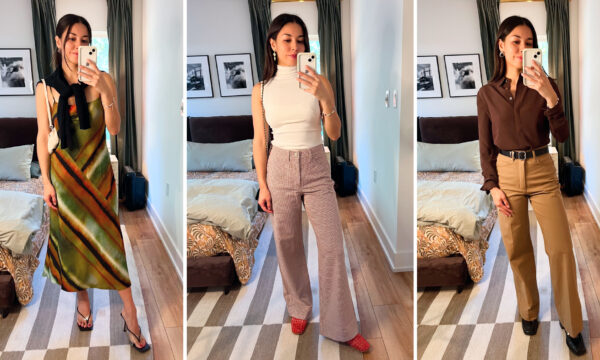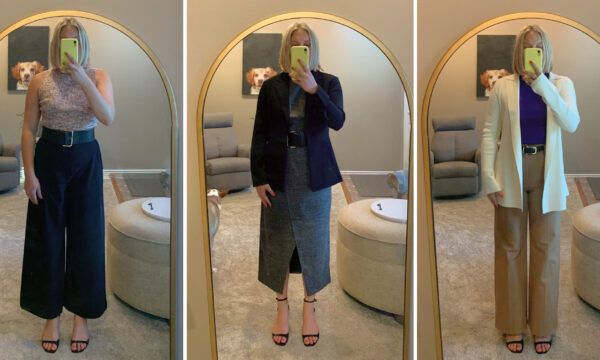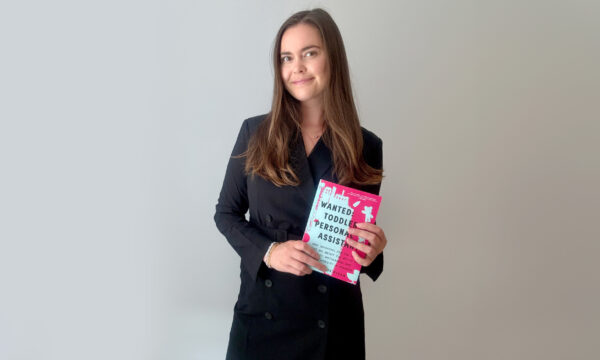
How Strategic Vision-Boarding Can Help You Get the Life You Want
Expert marketing consultant Grace Clarke shares a method that’s so much more than manifestation.
What if the life you’ve always dreamed of was just a vision board away? It’s a little more complicated than that, but according to media expert and marketing consultant Grace Clarke, a vision board is the first step in cultivating behaviors that lead to achieving your goals. With broad experience shaping iconic brands like Madewell, Warby Parker, and Glossier, Grace is a pro at asking the questions that turn hopes into actionable plans—and it all starts with learning to make your dreams tangible and visual.
Last week, Grace hosted a vision-boarding workshop at our Upper West Side store to share her expertise with the M.M. community. In case you missed it, you can try the exercise at home by downloading the worksheet (here’s page 1 and page 2) and images we used. We sat down with her the next day to learn more about her approach to vision-boarding, what surprised her about the event, and more.

Grace wears the Frederick cardigan. Photo credit: William Reed Photography.
Want more M Dash?
Sign up for our weekly newsletter.
Thank you!
Everything makes sense in hindsight. Ever since I was five or six, I’ve been in the business of bringing people together and sharing information. The first project I ever did was starting a newspaper in my neighborhood for my block when I was six. The first collaboration I ever pitched was to American Girl. I grew up with the American Girl dolls, and I wanted them to have a soccer uniform. I was eight and had just seen the Women’s World Cup, and I wrote them a letter saying, “You should collaborate with the women’s soccer team.” Those are just two early examples of me thinking, “I have an idea, I want to make it happen, and I want it to be something that other people can consume and enjoy.”
I always knew I was going to move to New York, and in the first couple chapters of my New York life, I was doing jobs that had never existed. I was either the first person to originate a role or the first person to join a new team. So I’ve never known anything other than ambiguity, which was great practice for becoming an entrepreneur.
At Madewell, I was their first content hire, and that meant trying to turn Snapchat and Instagram into revenue streams, at a time when they were often afterthoughts. I also worked at Town & Country, which now might be a little more well known, but at the time, it was the dentist’s office magazine. They had decades of archives—they’d been publishing since 1901!—but they were not doing anything with them. The magazines were in a windowless room full of shelves! I got them on Twitter and Tumblr—ask for forgiveness, not permission. Through those experiences, I realized that marketing actually has to be a business initiative, and if you can find a way to be creative while staying true to what helps people live out the best version of themselves within the constraints of capitalism—what a gift.
For the last four and a half years, I’ve been running my own marketing consultancy. I had saved up about a year of my minimum salary, and I was like, “If this goes south, I can pay myself for a year.” So I felt like I was ready to take a risk. Because I had just been supporting venture-backed startups—Reformation and Glossier and hims and her—for so long, I got really used to the finances of a lean operation. I decided, “Even though it’s just me, I’m going to make an employee handbook. I’m going to treat this a big company with multiple people. I’m going to have a PTO policy for myself.” I wanted to carry myself as an equal to a CMO rather than a do-whatever-you-need generalist. I realized, “No, I’m a fucking secret weapon, and I do my own stunts. I need to behave accordingly.”


A vision board is a physical, visual manifestation of what you want your life to be about. If you were to imagine scrolling through your phone’s photo library in a certain period of time from now, what would you see? How would you know that what you wanted became true? I start with a worksheet, because I’ve found that most vision-boarding exercises are too vague. A dream without a plan is just a wish.
At the vision board event, I took people through a compressed version of the annual-plan worksheet that I publish every January. If you answer the questions in it, you can’t not get where you want to go, because it takes you from big goals to a monthly plan. We defined what we want the next three months of our lives to be about, and then gave ourselves visuals. Once you have a vision board, your brain is actually primed to look for examples of those things, which makes you more likely to see new opportunities.
I’ll give you a really specific example. I wanted to run my work calls more efficiently and end them on time. I was sick of calls being dragged out and clients thinking I was always going to be around. So I told myself, “I’m no longer a person who does that. Clients want my value, not my presence. I’m going to start every call with an agenda and give everyone a five-minute check-in before it’s over.” Every day that I did it, I wrote in my journal. I integrated it into my behavior and then acknowledged it, so it started to feel like part of my identity.
I landed my dream client, Shopify, and I think it has a lot to do with the fact that I articulated for myself why that would be really valuable for me and—perhaps more importantly—how I could really be helpful to them. In December of last year, I was thinking about what I wanted to be true in my life and why I wanted to work with Shopify: It matches what I want more of in the world. Shopify empowers small businesses and it makes it easier for people to take big swings, like professionalizing a side project or growing a company. On top of it, I felt like I was ready. For a while, I was still proving to myself that I had enough value to add to a bigger company that seemed to have it all figured out.
Because I had it on that vision board, I was able to sell myself on the idea. From there, any time I was on Twitter and I saw someone mention something and they worked at Shopify, I was more likely to respond and jump into that conversation. Or when there were events at the Shopify space in New York, I’d think, “I’m going to go. I want to expand my luck surface area.” I was just way more primed to take those sorts of actions. A vision board is like mentally shining a flashlight in the dark so you can focus on the thing that matters.


I did a lot of collaging when I was very little. My earliest memories are hanging out with my dad, who was a musician, making with our hands—spray-painting pine cones in the winter and playing musical instruments, surrounded by magazines and catalogs. When you’re a kid, being told that you can cut up something that is someone else’s finished product is so freeing. It’s almost like you’re breaking a rule, but it’s generative, and there’s value in it. That is the earliest memory I have of thinking, “I can make something visual that reflects what’s going on inside me.”
I remember switching schools when I was a sophomore in high school and feeling like my life was finally starting. I went from a Catholic all-girls school to a public co-ed school, and I truly remember journaling, “I have a chance to reinvent myself.” I was this nerdy, introverted girl who was so intimidated by everybody. I didn’t feel like I’d found my people, and the more I thought about it, the more I believed it.
I thought, “I have a fresh start. What do I want to wear? What sports do I want to play? Who do I feel like I am that I didn’t get to be or show?” Before school started, I laid out two weeks’ worth of outfits, and I wrote down what I wanted different areas of my life to look like. I really thought, “I can now live out this identity that’s been in here that I’ve been not able to give voice to.” And really, the only makeover element was that I started wearing American Eagle tank tops—it’s not like I dyed my hair and became a cheerleader. But that was one of my favorite years of my life, and I think it’s because I set it up mentally before I even walked into that school.
I want to say something about the science of procrastination: It is not a mysterious curse or personality flaw. It is how we cope with—in short—bad moods and fears. A researcher explained it in a way that shook something loose in me: “Procrastination is an emotion regulation problem, not a time management problem.” I have some advice and mental reframes that always help me when I’m stuck.
I have three reminders that I give myself:
- If I’m feeling unmotivated and don’t know how to get started, I just remind myself that feeling’s okay. You’re in enough of a hole at that point, you don’t need to make it any worse by shaming yourself.
- Figure out what piece of the puzzle is missing. If there’s a work thing we’re procrastinating, it can be because we just don’t have all the support or supplies we need. What challenging emotion are we coping with?
- Ironically, the quickest fix is the one that requires the least amount of energy: Get up and change your surroundings in the least effortful way possible. The endorphins that come from just taking a walk are like medicine for your brain.
I find it helpful to immediately take some action. Motivation doesn’t come from thinking. It comes from doing. Momentum is the biggest gift you can give yourself, and your brain doesn’t know the difference between accomplishing a big thing and a small thing.
We can also trick our brains into feeling motivated when we dress a certain way. There is an incredible study published in The New York Times that measured the impact of cognition and performance through what we wear. They took two groups of people, doctors and professionals who weren’t doctors, and they had the doctors go to work without wearing lab coats, and found that their performance went down. Same day, same schedule, same type of work, but without that lab coat, they weren’t carrying themselves in the same way. They weren’t being as diligent. And then the non-doctor professionals were invited to wear a lab coat with their name on the pocket, and their performance went up. They had stronger performance reviews the next quarter. They reported more satisfaction with their job.
I was not surprised that professional, intense women would make time to do something like this, but I was blown away at how meaningfully everyone took it. No one was rolling their eyes. No one was not participating. You could just show up and have fun, but everyone left with their worksheets filled out.
The thing that made me truly walk away teary-eyed at the end of the night was the way people actually put their boards together. One woman made her board into a paper plane to symbolize her momentum into the future. Two friends who attended used some of the M.M.LaFleur textiles to tie their boards together to symbolize their bond, because one is moving to London. Another woman made her board and then poked holes in it and put the flowers from the table into it to show that there’s new life and growth in her world. I’ve worked with some of these people, and they’re so serious and no-bullshit, but when they had the environment to invest in themselves in a creative way, they really showed up.


I laid mine out almost as a timeline as a way to organize it. Themes that are coming up for me right now are focusing on being more gentle. Ironically, I think I’m a lot more productive when I try less hard and let things go. So there are a lot of themes around bringing more support to my nervous system. I have the words “support” and “community,” and then as we get to election season, that feels like such an amazing moment for all of us, so I started to think more about hope and belief and action.
At the end of the year, because I love Thanksgiving and Christmas, I made sure to put a lot of imagery around family and fireplaces and reading and snowy New York. I realized that I have not really approached a holiday season with intent. It’s such a free-for-all with others’ demands on our energy and time. But I’ve decided I’m going to savor every single second of the end of this year.
I also decided not to put anything about work on my vision board. I know I love my job and carrying myself a certain way professionally. I don’t need to vision-board that. That’s going to happen the minute I wake up. That Grace has enough support. I need to take care of myself and the people in my life. Overall, my vision was, “I just want to feel fulfilled, I want to get a woman elected, and I want to be less self-focused.” The holidays are the perfect time for that.





